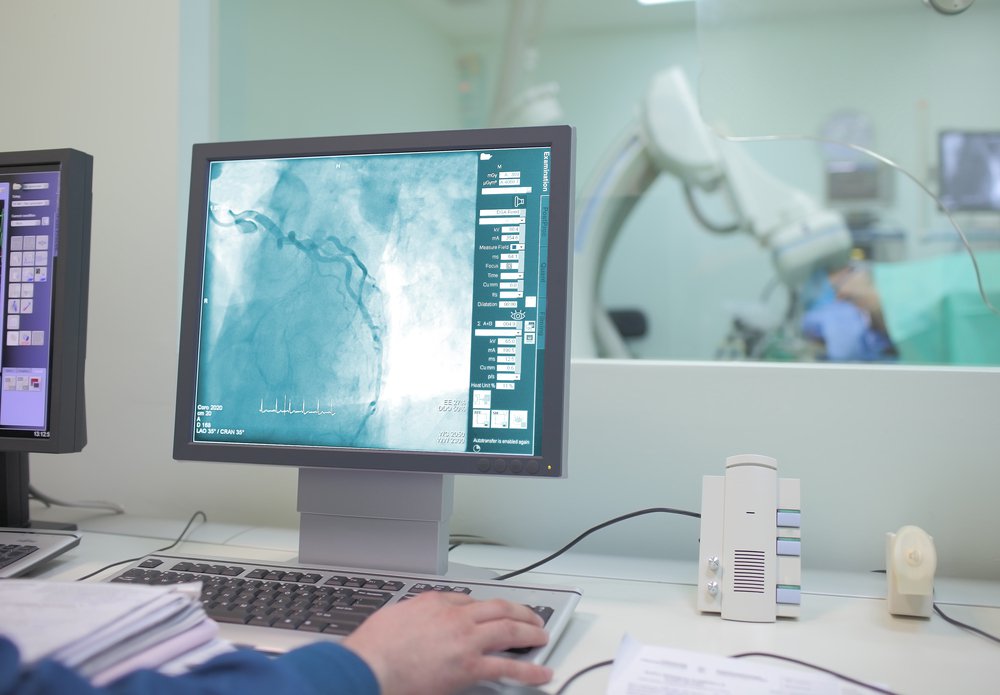 Everybody knows the look of an x-ray, whether it’s from the doctor’s office or a cartoon. But how much do you really know about what goes on when you get an x-ray or any other form of diagnostic imaging?
Everybody knows the look of an x-ray, whether it’s from the doctor’s office or a cartoon. But how much do you really know about what goes on when you get an x-ray or any other form of diagnostic imaging?
At Sinai Laser Vein Center, we’re proud to provide diagnostic imaging services for the detection and prevention of venous diseases, including ultrasound and x-ray. Here are a few interesting facts about the technology that allows our diagnostic imaging center to take a look at what’s going on inside your body:
X-Rays Give Your Doctor a Better Look
Everyone knows that x-rays are an external way for your doctor to create an image of your bones, organs, and other internal structures to diagnose conditions and injuries that may be lurking beneath the surface of your skin. But do you know how exactly they work? During an x-ray, the machine sends out small amounts of something known as “ionizing radiation,” a type of radiation that temporarily removes the electrons from the matter that makes up living tissue as it passes through your body. By removing the electrons, the x-rays ensure that these tissues show up in the image, while unhelpful obstacles such as skin and clothing do not.
X-Rays Don’t Just Capture Bones
While the traditional portrayal of an x-ray is an image of the skeleton, x-rays aren’t just capable of showing our bones. At Sinai Laser Vein Center, we perform a specific diagnostic test known as a CT (computed tomography) scan, which uses rotating x-ray machines to create cross-sectional images of the inside of your body. The detailed images obtained during a CT scan include those of soft tissues and blood vessels, making them valuable tools for our vein specialists in diagnosing conditions of the vein. CT scans also help detect fat, cholesterol, and calcium, all of which can build up in the veins and contribute to vascular disease.
X-Rays Are Totally Safe
Initially, it may be alarming to hear that you’ll be exposed to radiation during any medical procedure. However, it’s important to remember that the radiation you experience during an x-ray, CT scan, or other diagnostic test is 100% safe. While different parts of the body receive different amounts of radiation during a scan -- a smaller area like a hand or ankle will receive less than the chest or back -- but regardless, the amount of radiation you’ll receive is around the same amount as you would be exposed to from the general environment on an everyday basis.
Not All Diagnostic Imaging Involves X-Rays
At Sinai Laser Vein Center, we perform several types of diagnostic imaging, including the CT scan which involves x-rays. However, we also perform intravascular ultrasound (IVUS), a diagnostic test that uses sound waves to see inside your blood vessels instead of radiation. During an IVUS test, a catheter will be inserted into your arteries with a small ultrasound wand attached. The ultrasound will create an image on your doctor’s screen, allowing them to view the inside of your blood vessels. While there may be a slight pinch as the catheter enters the artery, the rest of the test should be entirely painless.
Understanding what goes on at a medical diagnostic imaging center can take some of the mystery out of it, reducing any anxiety you may feel and giving you a level of control as you go in for your test. At Sinai Laser Vein Center, we’re proud to utilize the most advanced diagnostic technology available to ensure our patients receive an accurate diagnosis.
Looking for the most cutting-edge testing available in the field of vascular medicine? Our team at Sinai Laser Vein Center uses the latest technology to diagnose and treat venous disease, and we’re here to help you have confidence in your health. Schedule your appointment today and take the first step toward healthy veins.
